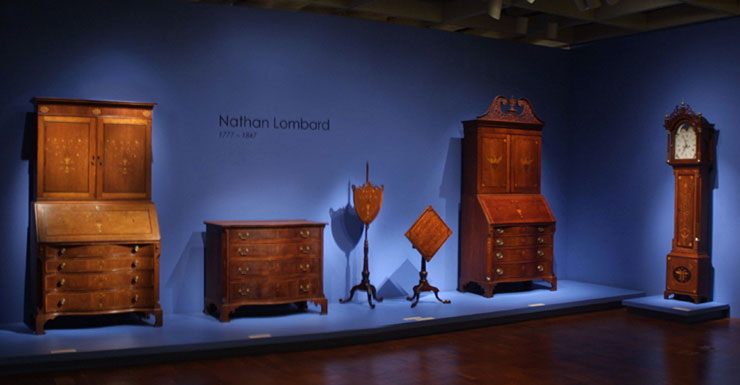
Nathan Lombard (1777-1847)
Following the Revolutionary War, cabinetmakers in urban areas began to expand toward large-scale production. These early factories set the stylistic tone for the furnishings of the new nation. In rural areas, cabinetmakers continued to work in traditional shops but their wares were influenced by the products of the larger manufacturers. Nathan Lombard exemplifies this type of small-town yet sophisticated cabinetmaker. Lombard married Delight Allen in 1802 and established a business in Sutton, Massachusetts, a growing village connected by busy turnpikes to nearby cities. He made furniture for the region’s successful merchants and farmers, probably attracting customers through his wife’s large family. Several pieces of his furniture, including the firescreen in this gallery, belonged to Ezra Allen, Delight’s second cousin.
Lombard’s inlaid designs are distinguished by their scale and exuberance. While his contemporaries often bought marquetry panels with flowers, geometric medallions, and eagles ready-made by specialists in English or American cities, Lombard developed his own interpretations of these popular motifs. He ornamented drawer fronts and tabletops with leafy vines growing from urns, often individualized with the initials of the object’s intended owner. The elongated necks and outstretched wings of his eagles lent a distinctive animation to the icon popular since the United States adopted the bird as its national symbol in 1782. Surrounding these pictorial inlays, Lombard’s dual-colored stringing and thick banding created an overall vibrancy that matched the other decoration on his furniture: boldly shaped feet, prominent finials, and intricately carved foliage.